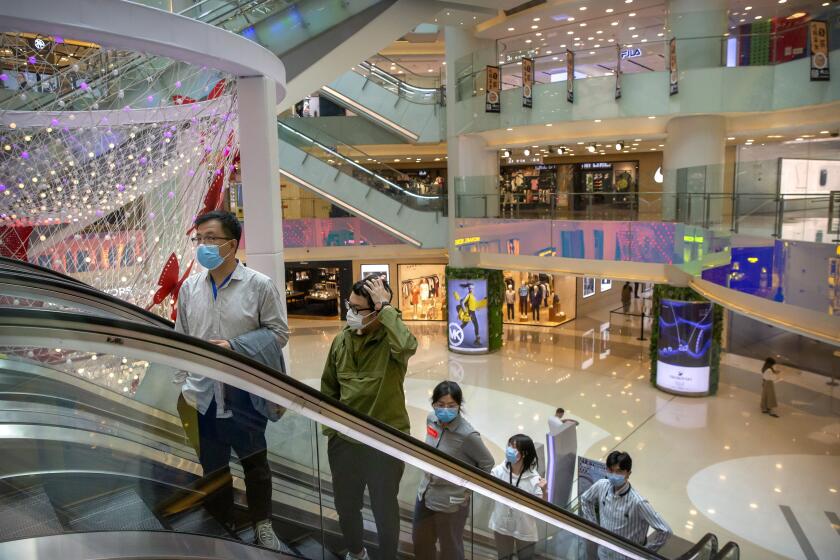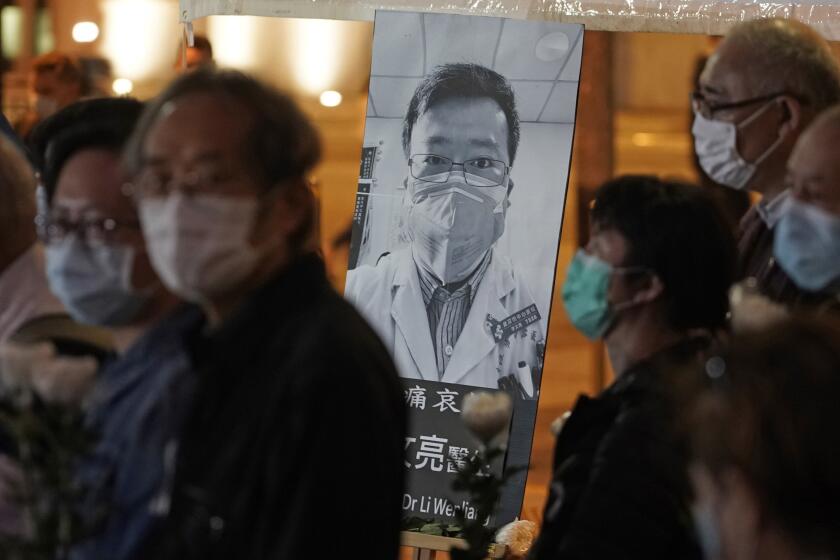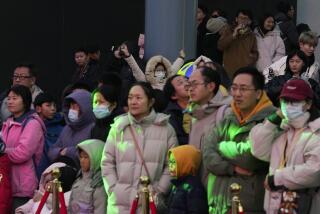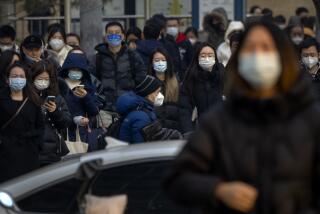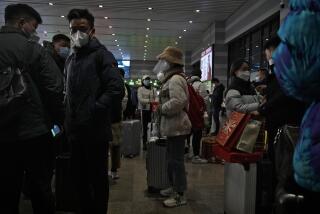Wuhan, China’s coronavirus epicenter, raises official death toll by 50%
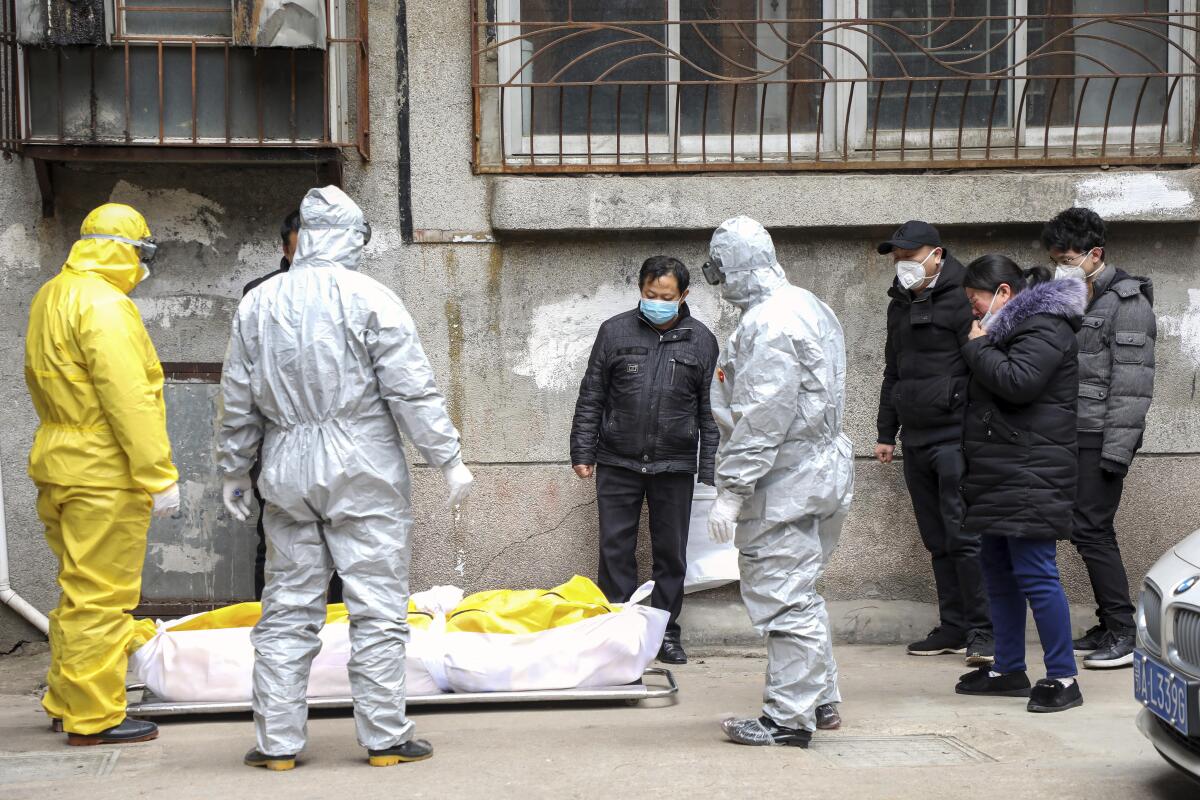
- Share via
BEIJING — China’s official death toll from the coronavirus pandemic jumped sharply Friday as the hardest-hit city of Wuhan announced a major revision that added nearly 1,300 fatalities.
The new figures resulted from an in-depth review of deaths during a response that was chaotic in the early days. They raised the official toll in Wuhan by 50% to 3,869 deaths. While China has yet to update its national totals, the revised numbers push up China’s total to 4,632 deaths from a previously reported 3,342.
The higher numbers are not a surprise — it is virtually impossible to get an accurate count when health systems are overwhelmed at the height of a crisis — and they confirm suspicions that many more people died than the official figures had showed.
The undercount stemmed from several factors, according to a notification issued by Wuhan’s coronavirus response headquarters and published by the official New China News Agency.
The reasons included that many people who died at home because overwhelmed hospitals had no room for them were not counted, mistaken reporting by medical staff focused on saving lives, and deaths at a few medical institutions weren’t recorded in the epidemic information network, it said.
“As a result, belated, missed and mistaken reporting occurred,” Xinhua quoted an unidentified official from the city’s response headquarters as saying.
Deaths outside hospitals were not registered previously and some medical institutions reported cases late or not at all, the official said.
A panel was set up to review the numbers in late March. It looked at data from multiple sources including the city’s hospital and funeral service systems and collected information from fever clinics, temporary hospitals, quarantine sites, prisons and elderly care centers.
The review found 1,454 additional deaths, as well as 164 that had been double-counted or misclassified as coronavirus cases, resulting in a net increase of 1,290. The number of confirmed cases in the city of 11 million people was revised up slightly to 50,333.
China has reported its biggest economic decline since the 1970s as it fought the coronavirus in the first quarter of the year.
Questions have long swirled around the accuracy of China’s case reporting, with Wuhan in particular going several days in January without reporting any new cases or deaths. That has led to accusations that Chinese officials were seeking to minimize the impact of the outbreak and wasting opportunities to bring it under control in a shorter time.
A group of eight medical workers, including a doctor who later died of the virus, was even threatened by police for trying to alert people about the disease over social media.
On a day when tombs are traditionally swept, China mourns its coronavirus deaths and praises Dr. Li Wenliang, calling him a martyr.
Chinese officials have vigorously denied covering up cases, saying that their reports were accurate and timely. However, the U.N.’s World Health Organization has come under criticism for defending China’s handling of the outbreak, and President Trump is suspending U.S. funding to the WHO over what he alleges is its pro-China bias.
Trump’s blaming of China came after he initially spent weeks showering praise on Chinese President Xi Jinping over the country’s performance in the pandemic, while largely dismissing the risk it posed to the U.S.
At the start of the outbreak, China proceeded cautiously and largely in secret, emphasizing political stability and the leadership of Xi’s ruling Communist Party.
More than 3,000 people had been infected before China’s government told the public that a pandemic was likely, something officials had concluded six days earlier.
The risk of sustained human-to-human transmission was also downplayed, even while infected people entered hospitals across the country and the first case outside China was found, in Thailand.
As Trump and other U.S. officials and lawmakers started blaming China for the outbreak, Chinese officials pushed back. “It might be US army who brought the epidemic to Wuhan,” Zhao tweeted in March, picking up on an unsubstantiated conspiracy theory.
More to Read
Sign up for Essential California
The most important California stories and recommendations in your inbox every morning.
You may occasionally receive promotional content from the Los Angeles Times.
